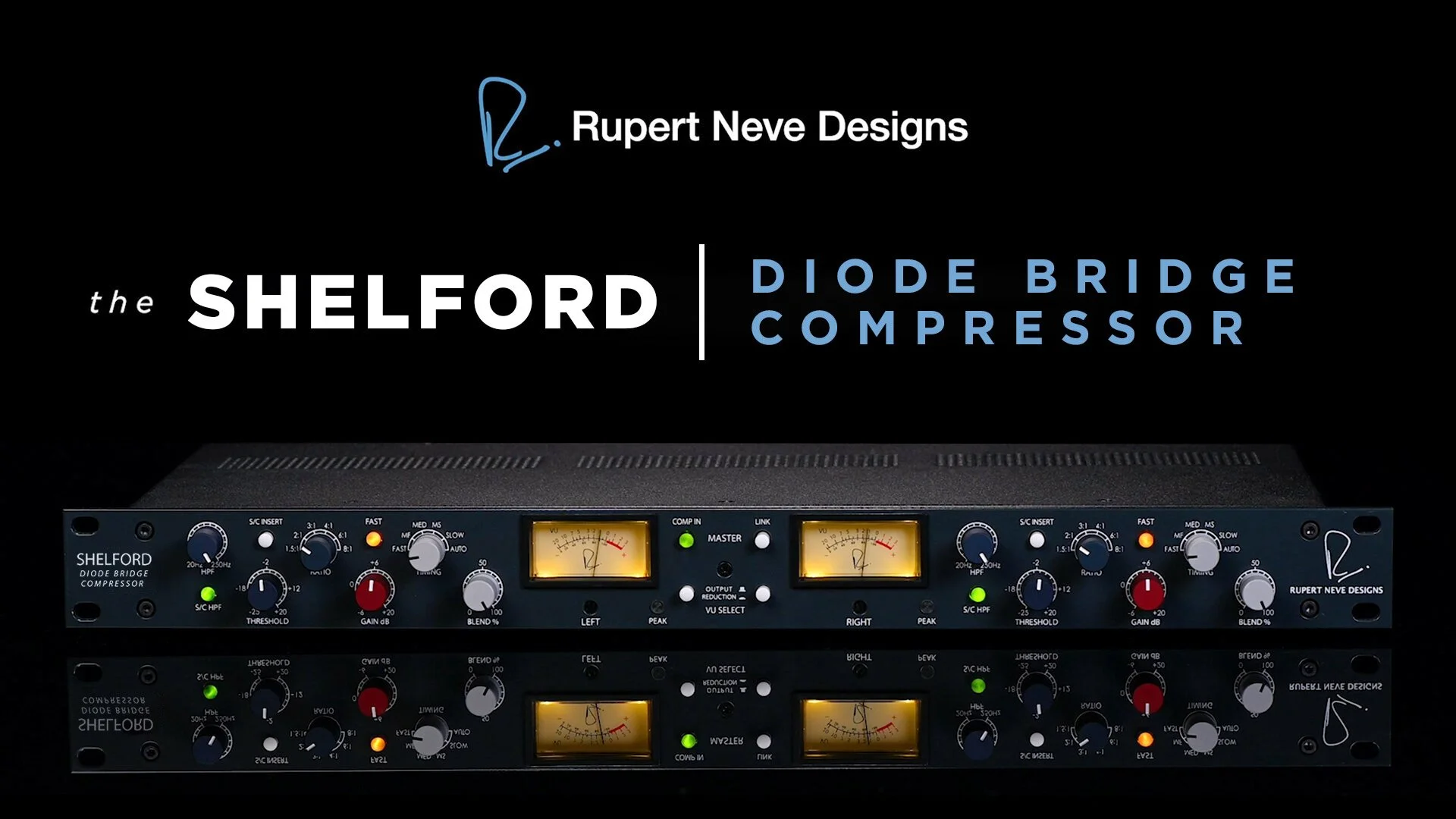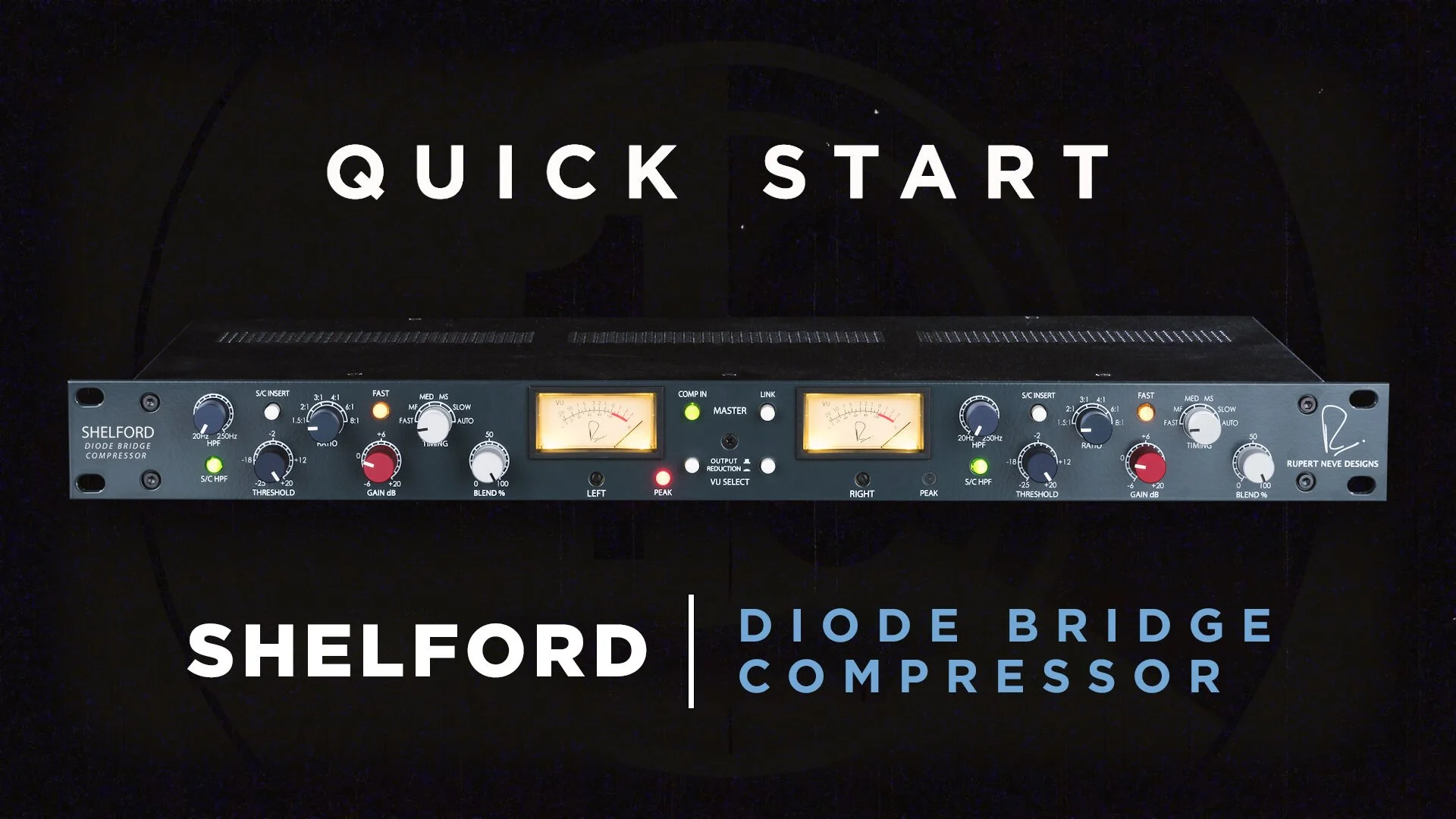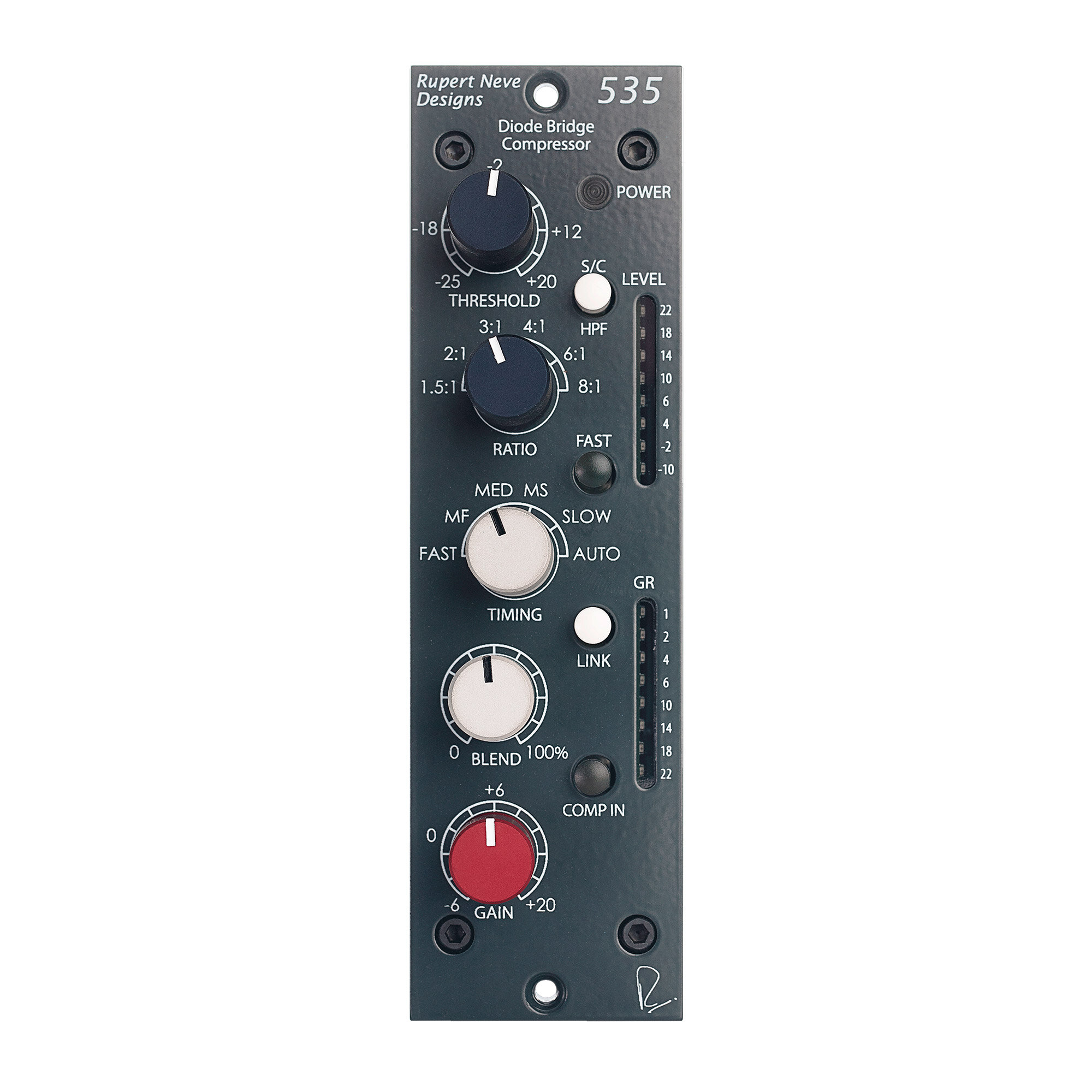
Shelford
Diode Bridge Compressor
OVERVIEW / MEDIA / FEATURES / REVIEWS / SPECS & RESOURCESPunch, color, weight, and tone. Two channels of iconic diode bridge compression – straight from the Shelford Channel.
Since the early 1970s, Rupert Neve’s vintage 2254 and 33609 diode bridge compressors have been revered for the punch & thickness they bring to drums, instruments, and the mix bus. Originally developed for the acclaimed Shelford Channel, the Shelford Diode Bridge Compressor captures the soul of these coveted compressors while providing a host of modern updates, including advanced timing control, significantly lower noise, fully stepped controls throughout, higher voltage power rails, and internal parallel processing capabilities.
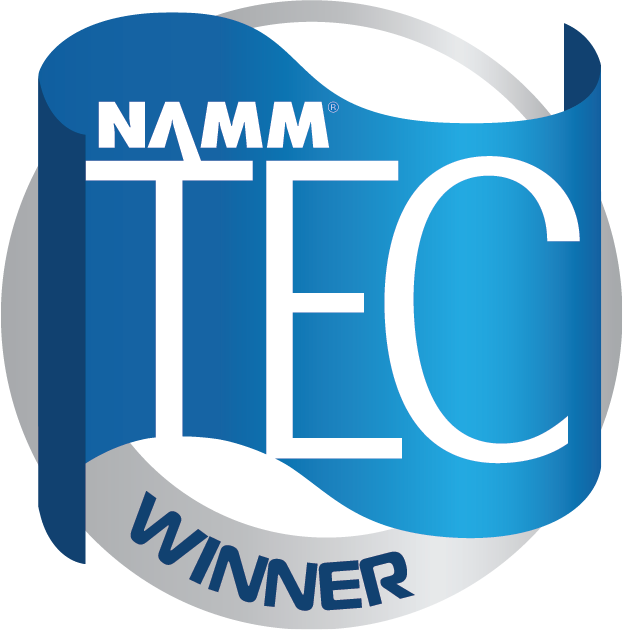
A Note on the Name (a.k.a. “Didn’t this used to be called the 5254?”)
This two-channel unit was first released in October 2020 as the “5254 Dual Diode Bridge Compressor” (and you’ll still see it referred to with that name in some older content below). In 2024 we updated the name to “Shelford Diode Bridge Compressor” to better reflect the circuit’s origins. But aside from the name change on the faceplate, the rest of the unit – inside and out – is identical to the 5254 many of you already know and love.
“…holy smokes. Not kidding…the best compressor I’ve heard in 30 years of mixing.”
What is diode bridge compression?
Where the VCA compressor found in the Master Buss Processor provides unmatched clarity, the weighty, harmonically rich tonality of diode bridge compression can be essential in pushing key sources like vocals, electric guitars, bass and drums to the forefront of a mix.
By understanding the limitations of vintage units like the legendary 2254 & 33609, painstaking effort was taken to reproduce the unique tone of these classics while improving the noise floor & accuracy, expanding inflexible time constants, adding full wave sidechain detection for improved dynamic response, and widening the range of threshold and ratio controls.
Delivering the powerful sound of these iconic designs with enhanced flexibility for the modern age, the Shelford Diode Bridge Compressor is a dynamic tool equipped to make a bold statement on virtually any mix or track.
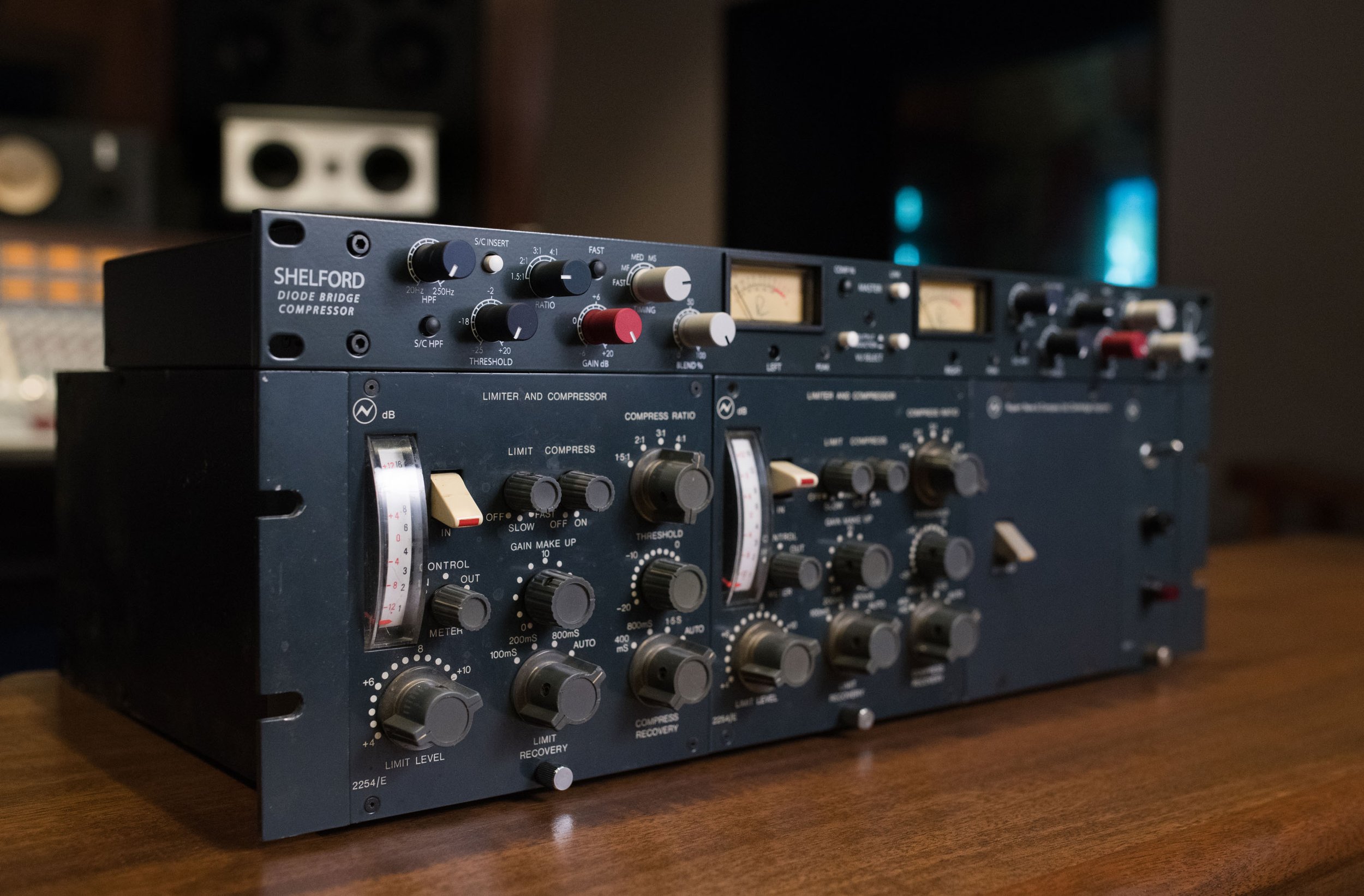
Try it on your own tracks for free, via Access Analog.
HOW DOES IT SOUND?
Click below to hear the Shelford Compressor on a variety of sources.
We recommend listening with headphones or on a good pair of monitors.
“A diode bridge is a very unique sound characteristic compared to other types of compressors. It is possible to create a cleaner sounding diode bridge than we have here, but we were after a particular flavor of harmonic content. As soon as you hear the sound, you know exactly what it is.”
—
Dennis Alichwer
Engineering Manager, Rupert Neve Designs

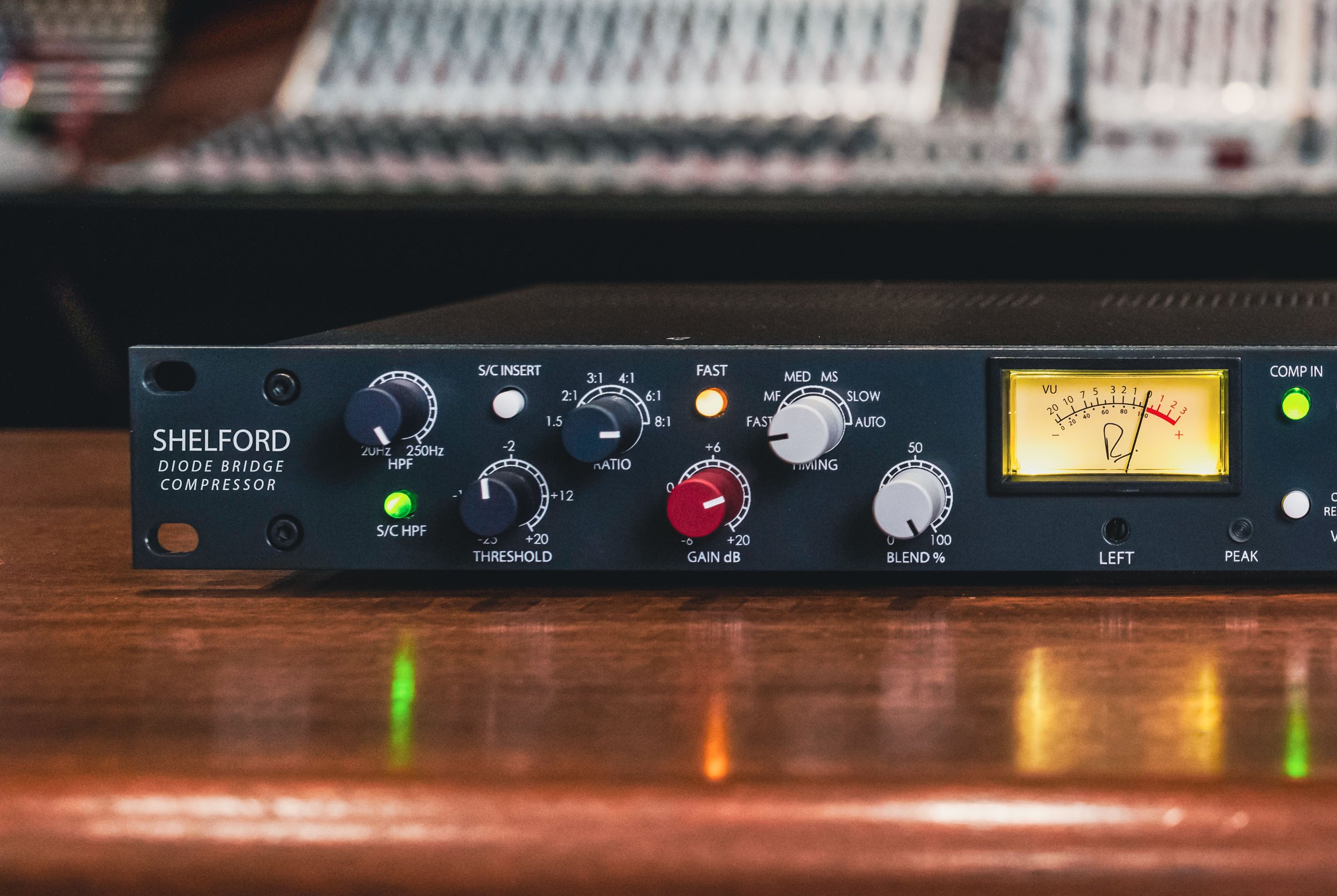
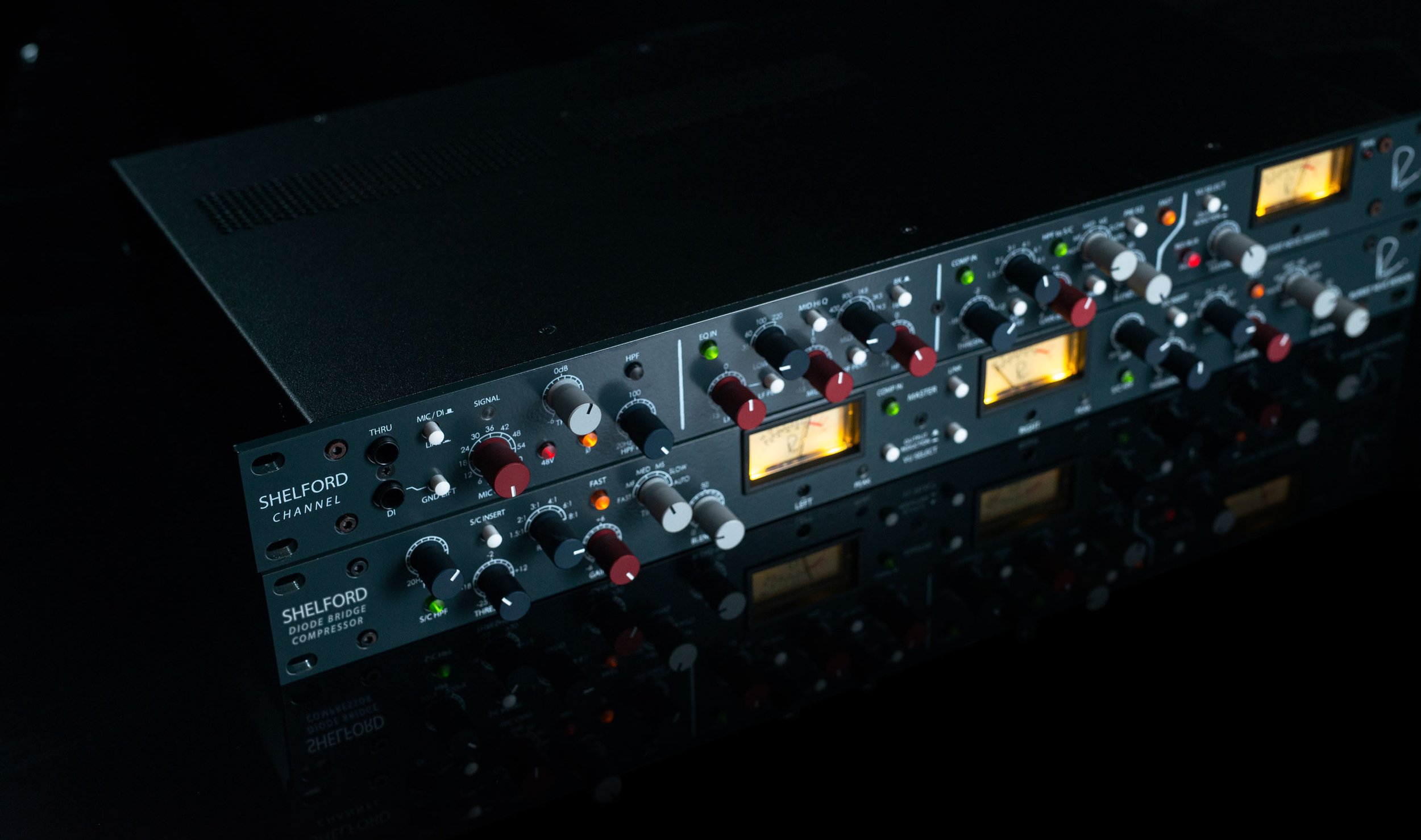

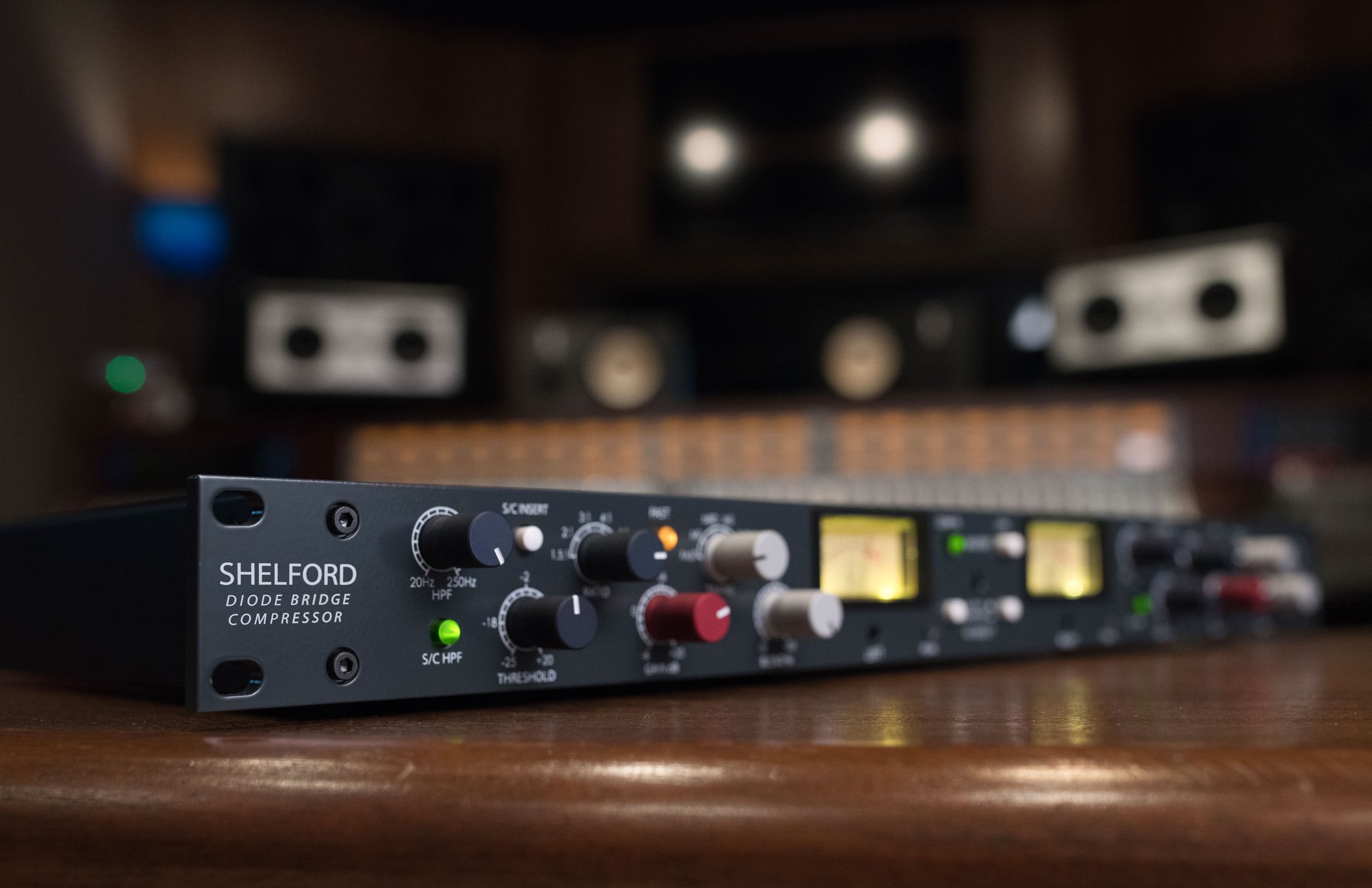
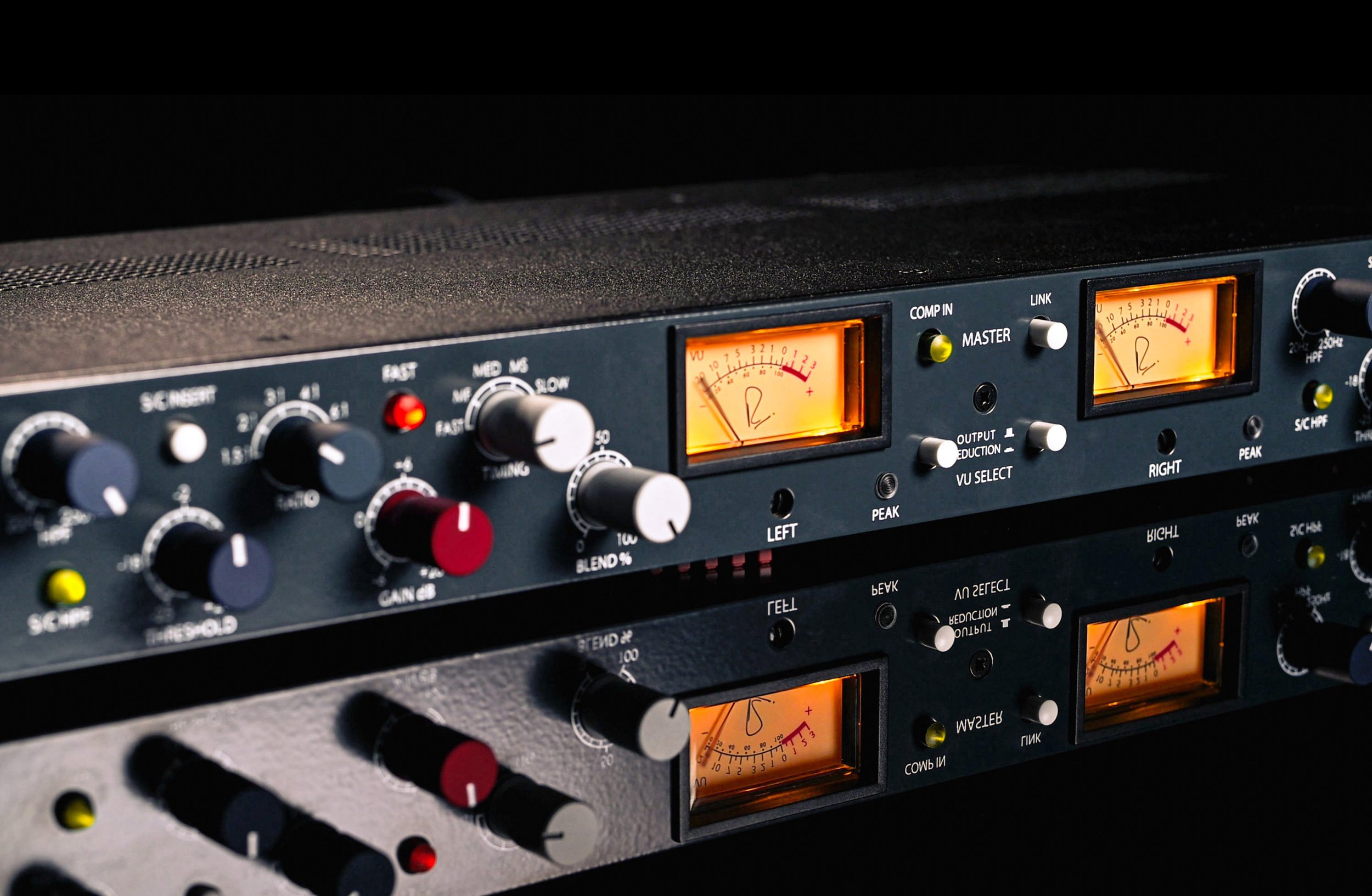
Classic Diode Bridge Tone
Capture the punchy, larger-than-life tone used on countless hit records for the last 50 years.
Advanced Timing Controls
Custom-shape your compression envelope with the unified timing control, which enables a much wider range of responses than vintage units or clones.
Custom Transformers and Class-A Line Amplifiers
Vintage warmth meets the improved headroom and precision of Rupert Neve’s updated transformer-coupled line stages.
31-Position Detented Controls
Accurately recall and match your settings with precision and speed.
Built-In Parallel Compression
Internal blend control enables you to subtly dial in more dramatic compression settings for color as desired.
Full-Wave Sidechain Detection
Enhanced from the vintage units’ half-wave design, the updated sidechain detector provides substantially more accuracy.
Stereo Linking
Run your compressors in either dual mono or stereo configurations.
Internal Universal Power Supply
EIC connection for world-wide AC power from 90-240V embedded in the 1U rack-mountable chassis.
REVIEWS
“…and holy smokes. Not kidding…the best compressor I’ve heard in 30 years of mixing.”
Kevin Lemoine
Green Day, Social Distortion, Iggy Pop
“The new 5254 retains the signature ‘clamp’ of the beloved 2254 while being more more flexible thanks to its expanded parameters. It was exactly what we needed to glue together our mixes on the latest all-analog Panic! At The Disco recordings.”
Jake Sinclair
Weezer, Fall Out Boy, 5 Seconds Of Summer
“It has all the fabulous tone and character of the old-school diode bridge compressors, with a much lower noise floor and far greater control options. The 5254 is a unique-sounding modern classic that stands out to me as one of the most sonically pleasing, versatile new compressors I have heard in many years.”
Anthony Gravino / Tape Op Magazine
“With slow and gentle settings, I found the 5254 sounded pleasantly clean — certainly cleaner than I remember the original 2254 being — but there is still a subtle hint of harmonic richness and character there, and it develops quite obviously with stiffer ratios, faster timings and higher signal levels. This all makes it a little more versatile than the original 2254 and it will undoubtedly have applications on a range of sources, as well as for group and master bus compression.”
Hugh Robjohns / Sound On Sound
“It’s one of those devices that make everything you run through it sound better. It adds weight and richness while remaining useful even at extreme settings. The diode bridge does something quite different to the audio than other compressor types and I suspect that if you add one of these to your studio, I’d quickly become an essential tool and permanent fixture.”
Stephen Bennett / Audio Media International
“I’ve always been a huge fan of the 2254, and now the 5254 gives me all of that vibe, with a lot more detail and control. I’ve tried it on pretty much all the individual instruments you might have in a mix…and it was really exceptional on the mix buss.“
John O’Mahony
Matt Maeson, Sara Bareilles, Vance Joy, Metric
“When I first heard the Shelford Channel, I fell in love again with the diode compressor and knew I was going to need more of the Shelfords just for the compressor alone. Everything I ran through the diode bridge sounded better, from drum buss, bass, electric guitar, vocals.”
Brian Foraker
Heart, Soundgarden, Bad Company
“After working on a vintage Neve console for 10 years, it’s exciting to hear the Shelford sound like a 1073 and 2254 are supposed to, but without all the baggage.”
Mitch Dane
Jars of Clay
“…a freaking 2254, which is the best compressor on the planet. So this is an updated version of that, and it’s got a Blend control so I can use it in parallel, which is a colossal pain in the butt to do with the old compressors, and now I can just do it with the twist of a knob – like, you know? Marry me!”
F Reid Shippen
Ingrid Michaelson, Kenny Chesney, Dierks Bentley

SPECIFICATIONS & DOWNLOADS
XLR LINE INPUT TO XLR LINE OUTPUT
Compressor Bypassed.
zSource = 40 Ohm Balanced
INPUT IMPEDANCE
10K Ohm
OUTPUT IMPEDANCE
40 Ohm
MAXIMUM INPUT LEVEL
+4 dBu Selected: +26.7 dBu typical
MAXIMUM OUTPUT LEVEL
+26.7 dBu typical
NOISE
10 Hz - 120 kHz: -104 dBu typical
FREQUENCY REPONSE
10 Hz to 120 kHz: +/- 0.25 dB typical
THD+N
From 22 Hz - 22kHz BW.
@ 1 kHz @ Maximum Level: 0.0008% typical
COMPRESSOR NOISE
From 22 Hz - 22kHz BW.
zSource = 40 Ohms Balanced
NOISE
@ 0 dB Make-up gain: -84.5 dBu typical
@ +20 dB Make-up gain: -64.5 dBu typical
COMPRESSOR TIMING CONSTANT MEASUREMENTS
Note: TIMING measurements represent the full range between 1.5:1 and 8:1 ratio and FAST mode
FAST – Attack 250 μS - 2 mS // Release 100 mS - 200 mS typical
MF (MEDIUM FAST) – Attack 1 mS - 5 mS // Release 100 mS - 200 mS typical
MED (MEDIUM) – Attack 3 mS - 18 mS // Release 350 mS - 700 mS typical
MS (MEDIUM SLOW) – Attack 5 mS - 40 mS // Release 600 mS - 1 S typical
SLOW – Attack 10 mS - 80 mS // Release 800 mS - 1.5 S typical
AUTO – Attack 5m S - 40m S // Release T1 400-900 mS, T2 1-2 S typical
UNIT DIMENSIONS
1RU: 19” W x 8.25” D x 1.75” H
(48.3 cm W x 21 cm D x 4.5 cm H)
UNIT WEIGHT
8.5 lbs. (3.9 kg)
SHIPPING DIMENSIONS
24” W x 13” D x 4” H
(61 cm W x 33 cm D x 10.2 cm H)
SHIPPING WEIGHT
10 lbs. (4.5 kg)
FREQUENTLY ASKED QUESTIONS
The Shelford Diode Bridge Compressor is basically identical to the compressor in the Shelford Channel. The 535 shares the same basic diode bridge design, but the lower voltage (inherent in the 500 Series format) and different line driving circuitry do have slightly different performance.
This two-channel unit was first released in October 2020 as the “5254 Dual Diode Bridge Compressor”. In 2024, we updated the product name to “Shelford Diode Bridge Compressor” to better reflect the circuit’s origins, though we left the model number (5254) the same – and you’ll still see that model number here and there, especially in older content.
But aside from the name change on the faceplate, the rest of the unit – inside and out – is identical to the 5254 many of you already know and love.
The Shelford Compressor is a diode bridge compressor, whereas the Master Buss Processor is a VCA compressor. VCA designs are generally used for precise, clean level control, and don’t necessarily impart “a sound” of their own. A diode bridge design is more colorful, with lots of vibe and personality – great for adding thickness, weight, and warmth to tracks or mixes.
Absolutely. While the Shelford Compressor may not be quite as “precise” as the Master Buss Processor, it can provide a very special “glue” to stereo mixes or masters. If the color is too much for the source, you can always dial down the Blend control; lower ratios and slower time constant choices will also impart less color.





